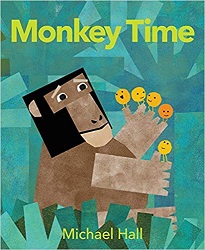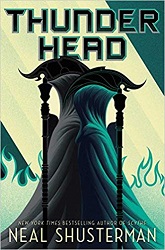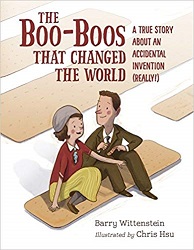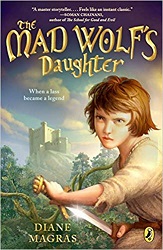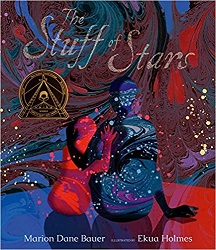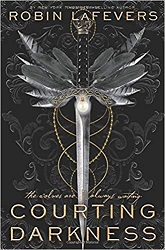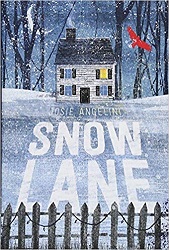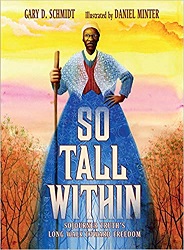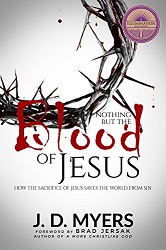 Nothing But the Blood of Jesus
Nothing But the Blood of Jesus
How the Sacrifice of Jesus Saves the World from Sin
by J. D. Myers
Redeeming Press, 2017. 274 pages.
Review written from my own copy, purchased via Amazon.com.
Starred Review
For awhile now, I’ve been reading books on theology, and lately on the theology of the cross. I’m not satisfied with the view I was taught in childhood, essentially that Jesus had to save us from God. This book has a foreword by Brad Jersak, whose book, A More Christlike God, I loved on this topic, so I decided to give this one a try.
Nothing But the Blood of Jesus presents a more elaborate theological system. And it makes fascinating reading. I’m not sure whether or not I agree with every detail. I don’t want to make any theory the be-all and end-all of what I believe about God, but I think this theory has a lot of insights to offer.
The author explains the organization at the beginning of the book. There are five sections covering five key concepts. The concepts are interrelated, though, so he says you may not have a complete grasp of the first concept until you’ve read about the others. The concepts he covers are sin, law, sacrifice, scapegoat, and blood. After a chapter explaining each concept, he’s got a chapter covering the key Scripture passages that talk about that concept.
And there’s really good stuff here! It challenges what I’ve been taught. Like I said, I’m not sure if I agree with every detail. But taken as a metaphor, it does shed lots of light on certain matters of faith.
Let me see if I can summarize the overall idea: The primary sin of mankind is scapegoating and religious violence. We use religion to scapegoat and blame others for our own failings and bring peace. However, when Jesus came and lived a sinless life, we scapegoated him, too – showing that even an innocent person will get scapegoated. Jesus showed a better way, a way of love and forgiveness. He showed us that God’s way of love and forgiveness surpasses the human tendency to scapegoat and blame.
Hmm. I’m not sure I did the greatest job with that summary. Let me include some quotes that I especially like.
This is from the section on Sin:
First, God is not angry at us for our sin. While sin is a serious thing, God is not concerned about sin simply because it is sin. That is, God doesn’t tell us to stay away from sin because sin offends, hurts, or angers Him. Purely from God’s perspective, sin just isn’t that big of a deal. The reason God is concerned about sin and wants all humans to stop sinning, is not because God Himself is offended or angered by sin, but because we humans are hurt and damaged by it. Sin is an issue with God, not because it hurts Him, but because it hurts us. God loves us so much, He tells us not to sin because He doesn’t want to see us get hurt by it. When God says “Don’t” what He is really saying is “Don’t hurt yourself.”
This leads to the second truth about sin to keep in mind: God does not punish us for our sin. Yes, we may get punished for sin, but this punishment is not from God. Sin carries its own punishment. In fact, the punishment that comes from sin is the pain of sin that God wants to rescue and deliver us from. God doesn’t punish us for sin; He works to rescue us from the punishment of sin. God loves us, and doesn’t want us to experience the devastating and destructive consequences of sin, and so He warns us against sin.
Here’s a thought-provoking section in the chapter looking at Scriptures about sin. This bit is looking at John 16:8 – “And when He has come, He will convict the world of sin, and of righteousness, and of judgment.”
I believe the Holy Spirit is doing an excellent job in this task. While it is true that the world still engages in a lot of rivalry, scapegoating, and violence, the world is also waking up to the fact that such practices are wrong. In ancient civilizations, it used to be that nobody questioned scapegoating violence. It “worked” to create peace in a society, and as a result of its effectiveness, it was assumed to be fully in line with the will of the gods. But since Jesus revealed the truth about scapegoating violence to us, and since the Holy Spirit has been convicting the world of this sin, it is no longer as effective as it once was and does not create any lasting or significant peace. The world is starting to recognize that true peace only comes through forgiveness….
Strangely, while the church should be leading the world in such matters, it sometimes seems the world leads the church. Quite often, when the world is exposing scapegoat victims as innocent and crying out for forgiveness and reconciliation, the church retreats into a position of judgment, accusation, blame, and calls for death. But when we recognize that the Spirit also convicts the world of sin, we do not need to be alarmed when the world sees something wrong before we do. Instead, we can be thrilled when we see the world responding to the movement of the Spirit in their midst, and we can join other people in their efforts to end rivalry, violence, and scapegoating. We can, like Paul in the Areopagus, stand up and say, “The One whom you worship without knowing, Him I proclaim to you” (Acts 17:23).
I was impressed with the author’s discussion of the Law. He pointed out that God offered the people of Israel a covenant relationship with Him first, based on love. But they didn’t want to deal with God directly. Here’s a section from the chapter on Law:
Yet even though “Love God and love others” is a good summary of the law, this statement is still a law, and Christians are not called to live according to the law. Instead, we are invited to live within a relationship based on love. While God does want us to love Him and love others, we cannot do this until we know that we are loved unconditionally. And once we know we are loved by God, love for Him and for others flows naturally from Him through us as we live within that love. This only makes sense, for no relationship can be built on law. True relationships are always and only built on love.
Imagine if you tried to build your marriage on a checklist of responsibilities. How long would such a marriage last? Let us even assume that the “To do” list was a very good list. It included things like saying “I love you” seven times a day, hugging your spouse three times a day, and having sex once per week. On this list, men were instructed to wash the dishes for their wives on Tuesday nights, and wives were instructed to give their husbands a backrub on Fridays. Imagine that this list had 613 such commandments and you were able to do them all. Would you have a “good” marriage relationship? Well, such a marriage might be better than other marriages, but no one would be able to call it a marriage “relationship.” It would be a marriage based on a checklist; not a marriage based on love.
This is exactly how to view the law, and in fact, is exactly how the law is presented in Scripture. The law serves as a substitute when a loving relationship is not possible, but no one should ever confuse law keeping with an actual loving relationship. Though the law may teach people the sorts of things one might see in a loving relationship, even a comprehensive list of 613 items can never substitute for an actual relationship built on love. Just as laws are needed where there is no relationship, laws are not needed where a relationship of love exists. If people reject love, the only alternative is law.
Another example from marriage shows how obeying the law can actually make us behave worse:
Yet when laws are created as a way to guide people into love, some begin to think that what is obedience to the law is more important than learning to love. It’s definitely easier. Imagine a (mostly) fictional scenario where my wife explains to me that she is not feeling loved, and when I ask her to provide examples of what I can do to show love she gives me a list of three suggestions. I can buy her flowers every week, ask her about her day at dinner, and kiss her every night before bed. But if I do those things perfectly every day for the rest of my life, does this then mean that I truly love her? Not necessarily; I can do all those things and still not show love. Worse yet, I can check these items off my list, but then turn around and do unloving things such as not actually listening to her when she tells me about her day, or mechanically kissing her goodnight. In such a situation, she will not feel more loved, but less. My strict obedience to the law actually leads me to treat my wife worse than ever before.
This is exactly how it can work with all laws. Laws are initially created to help people learn to show love toward God, themselves, or others, but when obedience to these laws becomes an end in and of itself, laws can actually lead to worse behavior than ever before. This is especially true when people begin looking for loopholes in the laws which allow them to live selfishly and dangerously while still obeying the letter of the law. In the example above, although I asked my wife about her day, I didn’t actually listen to what she said, which only makes her feel worse. It would have been better if I hadn’t even asked.
Usually, as these sorts of loopholes are discovered, the human tendency is to close them with even more laws. If my wife complained (rightfully so) that although I asked about her day I wasn’t really listening, the natural human reaction would be to create an additional law to actually listen to what she said. So now we have a fourth law. But the only way to prove that I was actually listening is to summarize or paraphrase back to her what she says. This creates a fifth law. But even still, I could do this without actually caring or showing any interest. So in an attempt to show interest, a sixth law could be created in which I must ask at least three questions in response to what she was saying. Do you see what is happening here? Due to a lack of love on my part, the laws are starting to multiply. But no matter how many laws we add, they will never be able to create genuine love. Yet in an attempt to produce love where there is none, more and more laws become necessary. This is exactly what happens to all laws. When there is no love, 10 laws become 600 laws which become 6000 laws which become 60,000 pages of laws. And with every new law, the reality of genuine love becomes less and less likely.
He talks about Jesus in that light:
When Jesus healed on the Sabbath, hung out with prostitutes and sinners, or let Himself get touched by lepers, He was breaking the religious interpretation of the law while He simultaneously fulfilled the spirit in which it was intended. The law was intended to lead to love and Jesus, knowing this, showed love to everyone with whom He interacted, even if His actions went against the letter of the law as understood and taught by the religious leaders of His day. We can follow the example of Jesus in this regard when it comes to the question of the Mosaic Law.
For those who are still a bit skeptical, there are several examples from the Mosaic Law which reveal loving actions in their day, but which would nevertheless be hateful and hurtful actions in ours. Several of the laws about women and slaves, for example, were huge movements toward love in the days when the law was given and both women and slaves were treated like property. In many ways, the laws of Moses gave value and dignity to women and slaves that was unprecedented among other people and cultures of that time.
However, if we were to treat women today as the Mosaic Law stipulates they are to be treated, such behavior toward women today would be misogynistic, sexist, cruel, and mean. The law of love as exemplified in Jesus Christ has brought about better treatment of women today than anything the Mosaic Law could accomplish through law keeping.
There’s lots more to talk about in that section. But then in the part about Sacrifice, this author really shook up some of my ideas.
In the first place, he makes a strong case that sacrifices were never for God at all – they were mankind’s idea, and they are purely for humans. He makes a strong case that the Bible talks a lot about sacrifice to show us that they don’t work.
Yes, God sent His Son to die as a sacrifice, but this was not because God Himself wanted or needed the sacrifice, but because God wanted to reveal and expose to humanity once and for all the violent and sinful tendencies that reside in our own hearts. God did not want or need the death of His own Son in order to satiate His wrath toward sin and extend forgiveness to us. No, God has always loved and always forgiven all humans for all their sin, simply because that’s the kind of God He is. He doesn’t need or demand payment for sin. (In fact, if He did demand payment, then He wouldn’t be forgiving; He would be getting “paid off.”)
From the beginning of human history, we humans have engaged in rivalry, accusation, and violence, and we often do such things in God’s name. Everything in Scripture is focused on revealing this one truth to us. But it did so imperfectly, because we humans could always justify our violent behavior toward others as “carrying out God’s will against unrighteous people.” In the name of justice we justify our violent behavior toward others.
But there was no way to justify our treatment of Jesus. He did no wrong. He never sinned. There was no unrighteousness in Him deserving of death. Yet we killed Him anyway, and we did so in God’s name. We sent Jesus to the cross and we claimed that it was God’s will. But it wasn’t. It never was. Jesus allowed Himself to be sacrificed in order to reveal to us that all sacrificial violence comes from the heart of man rather than the heart of God. Jesus died to reveal to us once and for all that God does not want sacrifices. Jesus revealed that it is we who want to kill others and we who justify our violence against men and animals by blaming this violence upon God. Once we see this truth, we can see how Jesus is the sacrifice to end all sacrifices.
There’s fascinating stuff in the chapter of Scriptural passages about sacrifice. I had no idea that the Hebrew word for “tunic” in Genesis 3:21, where God makes clothes for Adam and Eve, usually refers to a linen tunic, not leather. And the word for “skin” doesn’t have to mean the skin of an animal, but can just refer to clothes used for covering. So that idea that God killed an animal to make them clothes isn’t really found in the text.
And even Cain’s offering in Genesis 4:4 may not have been a sacrifice! This author points out that it says Abel offered an animal to God, but it never says he killed the animal. In fact, at that time, humans were vegetarians, so why would Cain have even thought of killing the animal?
There’s a lot more, and he looks at the sacrificial system overall. He makes the case that this was never God’s plan, but it was a step in the right direction.
Though much of the surrounding culture practiced human sacrifice, God forbade such practices, and limited the Hebrew people to animal sacrifice only. It was not perfect, but it was a move in the right direction. We must be careful not to reverse this redemptive move by saying that through the cross of Jesus, God wanted human sacrifice after all. Such a teaching is a move backward, not forward, in the biblical revelation about sacrifice.
Then in the prophets, we find God directly saying he doesn’t want sacrifices. (See Jeremiah 7:22-23, Amos 5:21-24, Micah 6:6-8, and other passages discussed in this book.)
The basic message of the prophets regarding sacrifice is that God owns the cattle on a thousand hills. He doesn’t need us to give Him more. Besides, He prefers them alive. God is not a God of blood and death, but a God of love and life. So do you want to worship God? Do so with love and justice, grace and mercy, generosity and peace. This is what the prophets proclaim. Jesus followed this prophetic tradition by teaching similar things during His life and ministry.
In covering the gospels, he says, “Jesus is the sacrifice to end all sacrifices, not because God is finally appeased, but because the heart of man and the heart of God are both finally revealed for what they are. We condemn and kill while God loves and forgives.”
He even mentions Romans 12:1 and points out that we are asked to be a living sacrifice to God, not a dead one.
A lot of the author’s ideas come together in Part Four, about the Scapegoat. He shows that mankind has always used scapegoats. When there’s rivalry and violence, blaming a scapegoat can bring groups together.
This does not mean that scapegoats are innocent. while the scapegoat may not be guilty of everything for which they are charged, the scapegoats are also usually guilty of some of the things. But this just adds to our certainty about the scapegoat. The best scapegoats are guilty scapegoats. There are almost always a few sins for which the scapegoat truly is guilty. People point to these obvious faults as clear evidence that the scapegoat must also be guilty of all the other faults which are not so clear. The glaring character flaws convince and persuade us that “the stories must be true.” Once these obvious sins and failures are pointed out to the mob, it becomes easy to then blame the scapegoat for the numerous sins and failures for which they are innocent. The few clear failures are extrapolated out into numerous faults until the scapegoat becomes a sinner of monstrous proportions and people do not realize they are turning a person into a scapegoat. The scapegoat itself becomes invisible, and we think we are just speaking the truth, calling out evil where it is found, and crying for the expulsion of the monster from our midst.
But Jesus became the Ultimate Scapegoat.
By becoming a scapegoat victim, Jesus revealed that all the accusations thrown at the scapegoat do not actually indicate crimes of the scapegoat themselves, but instead reveal the crimes of those doing the scapegoating. Scapegoats are a mirror into our own lives, culture, and society. We do not like what we see in our hearts, or in our society and culture, and since we find it so difficult to own up to such things, we lay the blame for them on someone else…. We kill the scapegoat to drive out the sin that is in our own hearts, but the sin that is in our hearts is only strengthened and amplified through the blaming and killing of the scapegoat. This is the first truth Jesus reveals about scapegoating.
The second truth is that we use the law of God to do the exact opposite of the reasons for which the law was provided. Due to a lack of love, the law was given as a tutor, to show us what love looked like and how love acted, until the time when we could love God and love others without the law. But instead, we used the law to further our own sin. We used the law to justify our sinful behaviors of dehumanizing, condemning, and killing others. We used the law to make scapegoats. This truth was perfectly revealed through the life, ministry, and crucifixion of Jesus when the law was quoted and cited as evidence against Him.
The author says that besides all the people we make into scapegoats, we also scapegoat God. Here’s part of his explanation of that, taken from his analysis of Revelation 5:5-6:
The fact that the Lamb is slain since the foundation of the world reveals that this is the way God has always been. He has always been an innocent Lamb who allows Himself to get slain for the sake of others. He is the premier scapegoat of humanity, but as a perfectly innocent scapegoat, it is best to describe Him as a Lamb. As the scapegoated God, Jesus identifies with all scapegoated, sacrificial victims since the foundation of the world. When we kill others in God’s name, Jesus is right there, with the sacrificial victim, being killed alongside the one we condemn, accuse, cast out, expel, dehumanize, and kill, all in the name of God. Through this revelation, we once again see that we can no longer scapegoat others in God’s name, for God is not a God who blames, accuses, and condemns, but is a God who loves, forgives, and accepts. And He calls us to do the same.
The final section of this book is about Blood. First, he points out that mentioning blood in the Bible is mentioning violence.
This is a critical point to grasp, for it shows that the crucifixion of Jesus on the cross was the greatest sin humanity has ever committed. The crucifixion of Jesus on the cross was not for the purpose of appeasing the wrath of God, for how can another violent death bring pleasure to a God who is opposed to all violent deaths? No, the bloody, violent death of Jesus on the cross was the greatest human sin in a long line of human sins that stretches back to the very beginning of human history. And the death of Jesus on the cross did not appease the wrath of an angry God (for He was never angry to begin with), but rather revealed the sin and violence that is in the heart of all mankind. The violent and bloody death of Jesus on the cross reveals where violence comes from and calls us to forsake such violent ways and follow Jesus instead into love and forgiveness.
But notice what this means. It means that the violent death of Jesus was necessary. There was no other way to reveal the truth about sin and bloodshed. The truth about sin and violence which Jesus unveiled on the cross could not have been revealed in a non-violent way. We humans are blind to our own sin and our complicity in violence, and we never would have believed that it was possible for us to violently shed the blood of an innocent victim unless such sin was clearly revealed to us. But this is what Jesus did reveal through His violent and bloody death on the cross.
And now we’re building toward a summary of all these concepts.
The ultimate truth that Jesus revealed by becoming a scapegoat and then offering forgiveness is that forgiveness is the best, most successful, and most divine way of creating peace in times of conflict. Since most conflict is generated through an ever-increasing cycle of violence and retaliation, no party in a conflict is ever truly without fault. Except Jesus. He alone, among all human scapegoats in the history of the world, could have justifiably retaliated against humanity for the crimes committed against Him. Yet instead of retaliatory vengeance, when Jesus was on the cross, He turned to God and prayed, “Father, forgive them; for they know not what they do.” Accepting forgiveness for what we have done and extending forgiveness to others is God’s only divinely-sanctioned mechanism for creating peace and restoring relationships in times of conflict. The way of Jesus, which is the way of God, is the way of peace through forgiveness.
In the section on Scriptures about blood, the author taught me that there are two Greek words for forgiveness used in the New Testament. Here he’s discussing the Last Supper and Matthew 26:28 – “For this is My blood of the new covenant, which is shed for many for the remission of sins.”
One of the central benefits of the new covenant is the remission of sins. But what does this mean? People read this statement and understand Jesus to be saying that the new covenant provides forgiveness for sins. Indeed, various Bible translations have the word “forgiveness” here instead of “remission,” which only serves to support this misunderstanding.
The error can be cleared up by recognizing that there are two kinds of forgiveness in the Bible. There is conditional forgiveness (Gk. aphesis), and unconditional forgiveness (Gk. charizomai). Aphesis forgiveness is conceptually closer to deliverance, or as rescue from the damaging consequences of sin. This aphesis forgiveness is better understood as release, liberation, or remission, and refers to gaining freedom from the addicting and devastating power of sin in our lives. Charizomai forgiveness, on the other hand, is based upon grace (charis), and refers to God’s free and gracious pardon of all sin. There are no conditions whatsoever for this second type of forgiveness, and God freely extends it to all people throughout all time for all their sin.
The type of forgiveness Jesus speaks of in Matthew 26:28 is the conditional type of forgiveness; aphesis forgiveness. When this is understood, we see that Jesus is not teaching His disciples that as a result of His death on the cross, God will finally be able to forgive humans for their sin because the debt has been paid. No, God has always forgiven all people of all their sin throughout all time. But just because we are freely forgiven by God, this does not mean that we have broken free from the power of sin in our lives. This is where aphesis forgiveness comes in. Though we all have free charizomai forgiveness from God, in order to actually experience freedom from sin in our lives, we must fulfill the conditions of aphesis forgiveness.
One of these conditions is to follow Jesus into the new covenant. In Matthew 26:28, Jesus is saying that now, because of the new covenant which is enacted or inaugurated through His blood (symbolized by the cup of wine), God was now making available a new way of dealing with the addictive and destructive power of sin in human lives. God was showing a new way forward. Through the new covenant in Jesus Christ, God revealed that violence and bloodshed never cures violence and bloodshed. Instead, what is needed is unconditional love and forgiveness, which are enabled and empowered by the indwelling Holy Spirit. All of these were gifts of the new covenant which was enacted through the blood of Jesus represented by the cup of wine.
[I actually went to my Strong’s concordance and looked at which Greek words are used for forgiveness where. This author is right. Aphesis is used most often, but especially when paired with something we need to do, such as repent – for the forgiveness of sins. So we need to repent to experience freedom. But when it talks about what God has done – then charizomai is used. We are to forgive as the Lord forgave us — charizomai, freely and fully.]
Please don’t think that because I’ve gone on and on at such tremendous length and provided so many quotations that you have read all that this book has to offer. I’ve said so much because I’m trying to grasp it all more fully. But there are many fascinating points I have left out, and his overall argument is far more persuasive if you read the whole book.
Here’s a final summary paragraph:
Nothing else reveals our sin to us like the violent death of Jesus on the cross. All other sacrificial and scapegoat victims we could justify. They deserved it. They truly were guilty. We were just treating them the way they treated us. But not so with Jesus. He was “sinless” and knew no sin, but we killed Him in God’s name anyway, thereby proving that this is also what we do to others when we feel justified and righteous in killing them. Only the innocent blood of the Lamb of God could reveal this to us and also call us to put an end to it through forgiveness. For of all victims throughout history, only Jesus would have been justified in retaliation and vengeance against those who wrongfully accused and killed Him. But instead He forgave us. This shows that we too can forgive others. We can forgive as we have been forgiven. We can love as we have been loved. The way out of sin is to see how Jesus dealt with our sin against Him. Nothing and nobody else could have so clearly revealed this to us.
So, wow – this book provides a big-picture way of looking at the cross – and even all of human history – that does not involve Jesus saving us from God and doesn’t involve God demanding violence.
As you can tell, this book got me thinking and mulling over all that the author says. This is a very long review, but I’m hoping it gives you enough of a taste that you’ll be hungry for more.
RedeemingGod.com
Buy from Amazon.com
Find this review on Sonderbooks at: www.sonderbooks.com/Nonfiction/nothing_but_the_blood_of_jesus.html
Disclosure: I am an Amazon Affiliate, and will earn a small percentage if you order a book on Amazon after clicking through from my site.
Disclaimer: I am a professional librarian, but I maintain my website and blogs on my own time. The views expressed are solely my own, and in no way represent the official views of my employer or of any committee or group of which I am part.
What did you think of this book?
